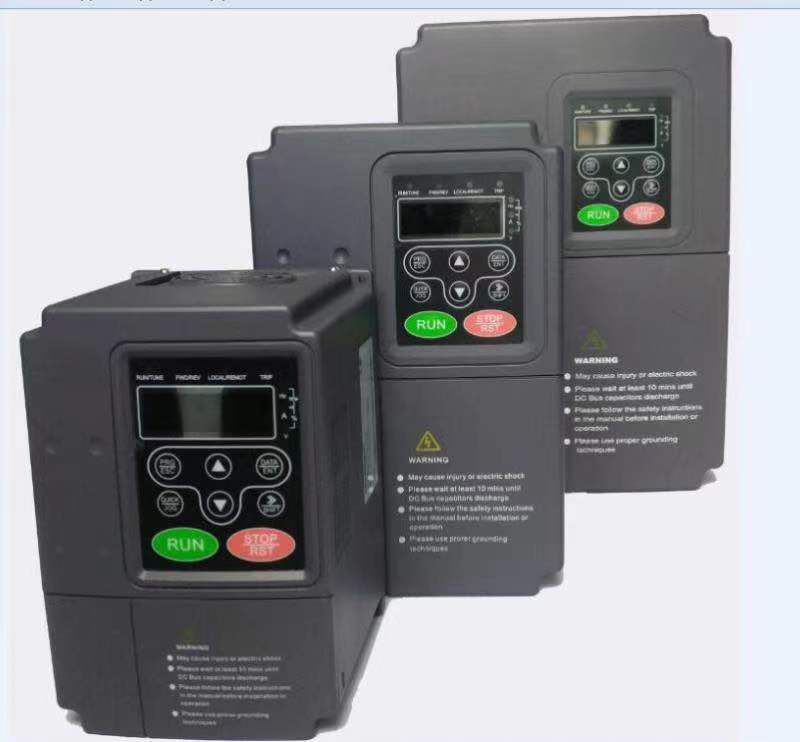
Is a Frequency Inverter the Same as a VFD?
When discussing motor control systems, terms like "frequency inverter" and "variable frequency drive (VFD)" are often used interchangeably, leading to confusion. This article aims to clarify the relationship between the two, explaining their functions, similarities, and differences. For industries reliant on electric motor efficiency and precision, understanding these devices is crucial.
So back to the question before, is a frequency inverter the same as a VFD?
Yes, a frequency inverter and a variable frequency drive (VFD) refer to the same device, designed to control the speed and torque of electric motors by varying the input frequency and voltage. However, the terminology can differ by industry or region.
This article explores the technology behind frequency inverters/VFDs, their applications, and how they compare to other motor control methods.
What is a Frequency Inverter/VFD?
A frequency inverter, also called a VFD, is an electronic device that regulates the speed of an electric motor by adjusting the frequency and voltage of the power supplied to it. These devices are integral in industries requiring precise motor control, offering benefits like energy savings, enhanced motor longevity, and improved operational flexibility.
1. How Frequency Inverters Work
Frequency inverters operate by converting the incoming AC power into DC using a rectifier and then back into AC using an inverter circuit. This allows the device to control the output frequency and voltage, enabling smooth adjustments to motor speed and torque. The modulation process, typically achieved through pulse-width modulation (PWM), ensures efficiency and stability.
2. Key Components of a Frequency Inverter
Rectifier: Converts AC to DC.
DC Link: Smooths and stores DC energy.
Inverter: Converts DC back to AC with the desired frequency and voltage.
Control Circuit: Governs the overall operation, allowing user-defined settings.
3. Primary Applications
Frequency inverters are widely used in manufacturing, HVAC systems, and transportation. They manage motor-driven equipment like pumps, fans, conveyors, and compressors, ensuring efficient and adaptable operations.
Similarities Between Frequency Inverters and VFDs
Since both terms describe the same technology, their similarities are foundational:
1. Core Functionality
Both frequency inverters and VFDs control the speed and torque of motors by altering the supplied frequency and voltage. This makes them indispensable in optimizing motor-driven systems.
2. Energy Efficiency
Both devices reduce energy waste by matching motor performance to load requirements. This is particularly beneficial in applications like water pumping, where demand fluctuates.
3. Operational Benefits
Precision: Enables precise adjustments to motor speed.
Flexibility: Allows motors to operate at variable speeds without additional mechanical components.
Longevity: Reduces wear on motors, extending their service life.
4. Wide Range of Applications
From industrial plants to renewable energy systems, both terms encompass a broad spectrum of uses, making them essential for sustainable operations.
Are There Differences Between the Terms?
Although frequency inverter and VFD are often used synonymously, slight distinctions can arise based on context or region.
1. Terminology Variations
In many cases, "frequency inverter" is more common in European markets, while "VFD" is prevalent in North America. The terms reflect the same device but differ linguistically.
2. Technical Focus
"Frequency inverter" emphasizes the device's ability to control motor input frequency.
"VFD" highlights the broader functionality, including speed control and efficiency optimization.
3. Marketing Preferences
Some manufacturers or industries prefer one term over the other for branding purposes or to target specific audiences.
Benefits of Using Frequency Inverters/VFDs
Understanding the advantages of these devices reinforces their importance in modern systems:
1. Energy Conservation
Frequency inverters optimize motor performance, preventing overuse of energy. Industries relying on high-energy systems, such as HVAC, benefit greatly.
2. Improved Process Control
Whether it’s adjusting conveyor speeds in production or maintaining stable pressure in water systems, frequency inverters provide unparalleled control.
3. Enhanced Safety
These devices allow smooth motor starts and stops, reducing mechanical stress and the risk of accidents.
4. Cost Savings
Energy efficiency and reduced maintenance needs translate to significant cost reductions over time.
Alternatives to Frequency Inverters
While frequency inverters are the gold standard for motor control, alternatives exist for specific needs:
1. Soft Starters
Soft starters limit inrush current during motor startup but lack the continuous speed control of frequency inverters. They are ideal for applications requiring only a smooth start.
2. Servo Drives
Servo drives offer high-precision motion control but are generally more expensive. They are best suited for robotics or CNC machines.
3. Direct-On-Line (DOL) Starters
DOL starters are simple and cost-effective but operate motors at full speed, making them less efficient and less adaptable.
FAQ
1. Are frequency inverters and VFDs identical?
Yes, they are two terms for the same device, with regional and industry-specific preferences.
2. Can I use a frequency inverter with any motor?
Most motors can work with frequency inverters, but compatibility depends on motor type and application requirements.
3. What is the main benefit of a frequency inverter?
Its primary advantage is energy efficiency, achieved by matching motor speed to demand.
Conclusion
To summarize, a frequency inverter and a VFD are the same device, designed to control the speed and performance of electric motors efficiently. Their interchangeable use depends largely on terminology preferences, but their importance in industrial and commercial applications remains unmatched. By understanding the nuances of these devices, businesses can make informed decisions to enhance operational efficiency, reduce energy costs, and improve system performance.





















